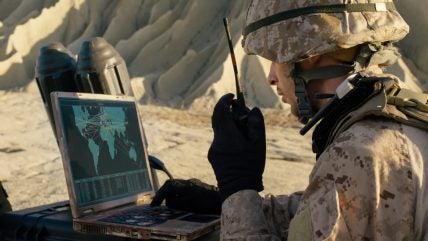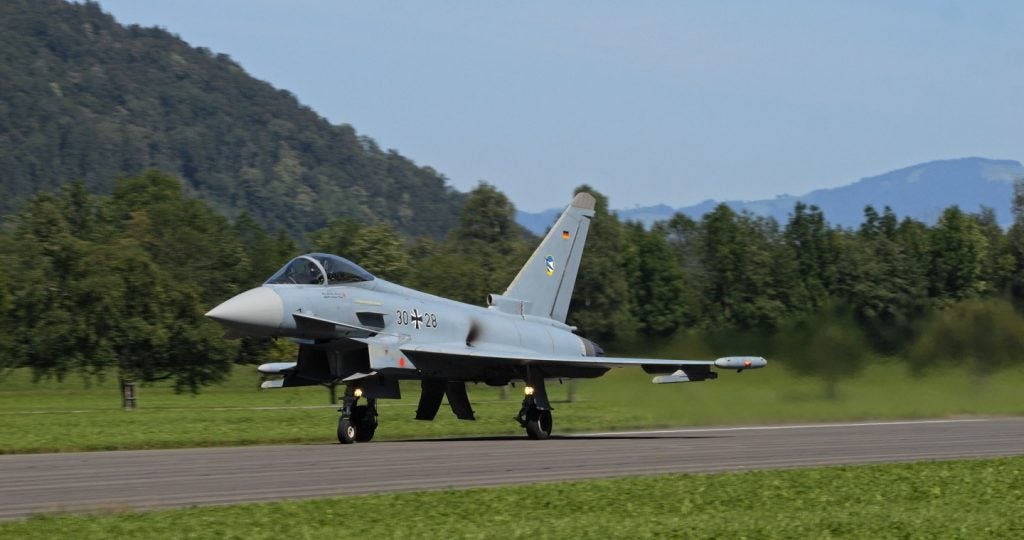
In his time as a British Army officer, Neil Hendry served on tours in Northern Ireland, Bosnia, Iraq and Afghanistan. He was also posted to the UK Specialist Regiment – and still serves as a volunteer Special Constable with Gloucestershire Constabulary.
After leaving the military in 2009, he co-founded Enterprise Technologies UK, which was subsequently acquired by video technology provider Digital Barriers. Hendry now oversees tech-military operations as Defence and Government Director.
Speaking to Army Technology, Hendry explains how Digital Barriers uses IoT to provide surveillance software, communications systems and other defence tech for NATO organisations and Western militaries.
How does Digital Barriers work with IoT in the aerospace, defence and security industry?
Neil Hendry: Digital Barriers has spent over a decade in the defence and security industry, providing passive intelligent surveillance solutions for the transmission of live video over low or variable bandwidth networks. We support IoT technology in our video compression, part-funded by the UK and US governments, which requires up to 90% less bandwidth than competing technologies, is end-to-end encrypted, and delivers real-time edge analytics.
We provide an IoT video and sensor system to protect troops in hostile environments. The rapidly deployable and soldier-portable equipment has been used to protect forward operating bases for many years. It distinguishes between possible risk and the routine movements of people or animals in any given area, providing those on the frontline with advance notice of incoming threats.
Historically, defence organisations have been concerned about the security of transmission over public and private commercial networks. We therefore started out by providing our solutions directly to defence organisations to deploy over their own closed networks. However, over the past few years defence organisations have grown much more comfortable with IoT devices communicating over public and private cellular.
How well do you really know your competitors?
Access the most comprehensive Company Profiles on the market, powered by GlobalData. Save hours of research. Gain competitive edge.

Thank you!
Your download email will arrive shortly
Not ready to buy yet? Download a free sample
We are confident about the unique quality of our Company Profiles. However, we want you to make the most beneficial decision for your business, so we offer a free sample that you can download by submitting the below form
By GlobalDataWe’ve come to be relied upon to securely deliver actionable video over any combination of public, private or in-service military network for maximum failover and flexibility.
Which governments, militaries and specialist law enforcement organisations has Digital Barriers worked with? In what capacity?
We work with the entire Five Eyes Anglosphere community and with many NATO organisations and governments, providing the edge intelligence required to understand what is happening on the ground in real time. That means identifying when there is a threat and when video needs to be transmitted across the network in the first instance. Then understanding where to send it either for instantaneous verification or for further analysis by secondary classification systems.
Our advanced surveillance software can bring secure and reliable connectivity to any IoT devices deployed in the field, augmenting any soldier, vehicle, aircraft, maritime vessel, UAV or other remote assets with sophisticated real-time surveillance capabilities.
What impact has IoT technology had on Digital Barriers’ solutions?
Digital Barriers’ technology was initially created to enable the reliable and secure transmission of video over cellular networks with limited or variable bandwidth. It therefore predates military use of IoT-type capabilities, which were initially only deployed over closed military-grade networks.
Military and government organisations have since had time to put the reliability and security of our technology to the test. We’ve also had time to gain a range of supporting accreditations that offer the peace of mind that our solutions can be trusted. I’d therefore argue one of the biggest impacts we’ve had is to make the concept of any device, any connectivity, anywhere an achievable and reliable reality for anybody that wants it.
How does IoT fit into your other high-tech solutions, such as your AI-based codec?
The combination of our AI-based codec with IoT sensors from a range of manufacturers means aerospace, defence and security can become more intelligent in their use and distribution of live video. We first use edge analysis to discern if anything in the video is actionable and create rules for how it should next be processed. We then use our unique video compression and transmission capabilities to securely transfer this information via whatever network is available.
For example, let’s say we have a surveillance system deployed in a hostile environment and want to be alerted if it detects an incoming military unit. In this scenario we’d use simple edge analysis to differentiate between armoured vehicles and a regular passenger vehicle. We’d then automatically send the video to a secondary classification system to reveal specific details such as the make, model, likely country of origin and weaponry it was equipped with. Before providing all of this intelligence back to troops in the area so they know exactly what is approaching.
What is the future for IoT in defence?
From my perspective, the future expansion and value of IoT in defence lies in continually learning how to identify and respond to risks in a dynamic way. This will require the ability to instantly process massive amounts of data, to generate actionable information from it, and to provide this back to those on the ground in the format that is most useful.
I’m proud of what we’ve already achieved in creating the backbone that enables the reliable streaming of IoT video from the frontline. In terms of the potential applications, we’re only just getting started.






